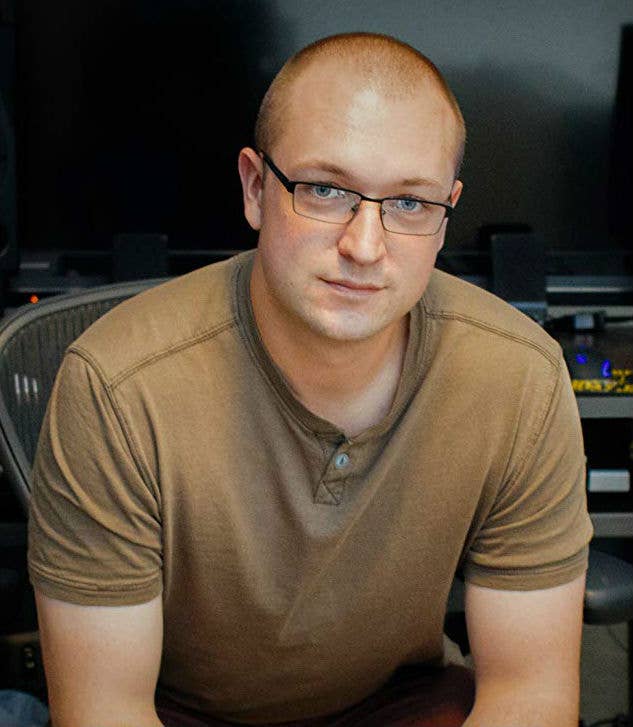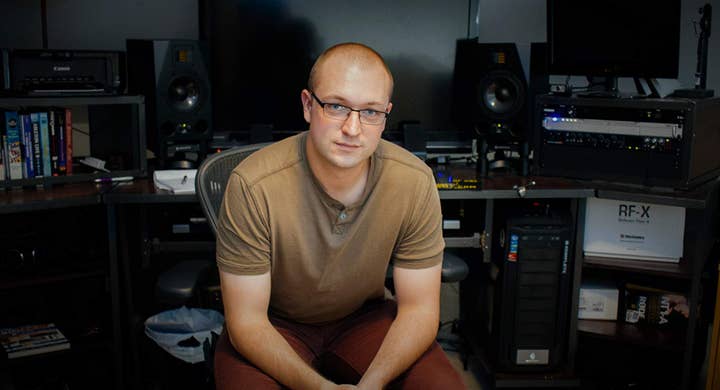Getting the best from your audio department
Unlock Audio's Elliot Callighan on the importance of communication in creating game audio, and practical advice on how to be better
Elliot Callighan is a composer and sound designer, and the owner of Unlock Audio. He also teaches as adjunct faculty in the film and game programs at DePaul University in Chicago.
Communication can be the hardest part of any collaborative process. This is especially true in art, and it's definitely true in audio.
Every community and discipline has its own language, its own slang, and its preferred way of communicating. So today, I'll be talking about some of the ways us audio folks like to communicate, and some of the ways you can be awesome at talking about audio.
Before I begin, I do want to say that any audio person or composer worth a grain of salt has (hopefully) realised that part of their job is to act as an interpreter and translator for non-audio/music people. This is true even within the audio community; composers need to know sound-design and non-musical audio terms, just like sound designers need some basic music lingo.
If your audio people aren't trying to find different ways to communicate and understand what you want/need, they're not doing part of their job. Alright, let's talk about some things you can bring to the table that will make audio communication easy.
"Don't be the person that says 'it should sound more blue' and think you've effectively communicated"
References
If you take only one thing away from this article, please make it this. References are incredibly helpful for any type of audio person. Again, so much of the difficulty we're discussing is communication. You can take out a massive amount of potential miscommunication by being able to hit play or send a link and say "like this."
Phrases like "make it sound heavier, bigger, higher, darker, harder" -- all make perfect sense to the person saying them, but there are myriad ways to make something sound "higher" or "darker." On top of that, it's not only a matter of executing the idea, but understanding the idea of the intended sound itself. Don't be the person that says "it should sound more blue" and think you've effectively communicated. It may make perfect sense to you, but trust me, your audio people have no idea what that means.
This is especially true when talking through emotional content and experience for music; there are lots of different types of "sad" music. Have some references, know what you like about them, and say "like this."
Vocabulary
Even with references, having some basic terms in your pocket that audio people know will help you immensely. In the game audio courses I teach at DePaul University, we spend a considerable amount of time getting students to talk about audio in a way they haven't before. There are lots of words used to describe audio and music, but below are some of the most common and universally accepted. Use these, and your audio discussions will be much more efficient and productive.

Pitch -- The psychological perception of frequency. AKA, playing different notes on a piano. Don't just say make it “higher.” Say “higher pitched” or “raise the pitch.” Your audio folks will know exactly what you mean.
Loudness -- How loud we perceive a sound to be. Using words like "louder" and "quieter" do a pretty good job of communicating this, but it happens all the time that non-audio people will try to talk about loudness and use terms like “lower,” “higher,” or “softer.” These words can have lots of different meanings in the world of audio. Anytime you want to talk about how loud or quiet something is and be super purposeful, throw the term loudness in there.
Timbre (pronounced tamber) -- The tone quality or “colour” of a sound. If you play middle C on a piano just as loud as playing middle C on a viola, the difference between these sounds is their timbre. Similar to loudness, people use “higher,” “lower,” “softer” to describe timbre as well. This is fine, but you can see how easily these words can be misinterpreted. Want to be extra sure you're communicating what you want? Use timbre in your sentence.
There are many other terms us audio folks use to be very specific when talking about audio, but if you begin to use the three I've listed above, you will save yourself (and your audio people) so much time and headache.
Your game
No, you don't need to wait until the game is almost done to bring in an audio person -- quite the opposite, actually. But you do need something to help you communicate your game and the world you're creating to your audio people, even if the game is in its early stages.
"Audio and music are both a process, and that's okay. Exploration, experimentation and sometimes failure are just part of the gig"
(Quick side note: You should bring in your audio collaborators as early as possible. You will be so much happier with your end audio experience.)
For more emotional types of audio such as voice acting and music, having character, concept or environment art can be a fantastic resource if actual gameplay isn't available. Also, if you have a significant backstory or lore you've created, this can be great for helping decide how this character should sound and/or how the world should “feel.”
But even with these, audio folks need to know a basic outline of what the gameplay is going to be like and any sort of progression to it. There are many ways we can tailor audio to closely “fit” the game and gameplay experience, but we need to know these considerations as early as possible. Consider a stealth-action game; knowing that there is a stealth mechanic with different stages of intensity can open up a world of possibilities for composing and implementing an interactive score.
For less emotional audio, the best thing is to have video of animations or events. When I worked at a large corporate developer in the past, sometimes I would literally walk over to an animator or programmer's desk and take video with my phone to begin the sound design. Because of the processes in place, they couldn't send the animation to me as “final,” but I could begin the experimentation process. Plus, 90% of the time, it was the final version anyway.
Realistic expectations
Audio and music are both a process, and that's okay. It rarely happens that the first version of a sound or piece of music is ready to go into the final game. Exploration, experimentation and sometimes failure are just part of the gig. Knowing that you are always getting closer to your goal is important -- especially when you're excited to hear what your audio people have been cooking up, but it doesn't quite hit the mark.
That being said, if version 15 basically sounds the same as the previous 14 versions, that's just a terrible audio person or serious lack of effective communication. Each version needs to be trying another interpretation of your notes or adding to what they had before. Creating multiple versions and using the differences between them can also be very helpful to communicate. But in order to do that, we first need to create those couple different versions.
Overall, if you take the time to think about and purposefully communicate with your audio person instead of improvising descriptions and goals on the spot, you should be in great shape. Pair that with good references, some basic audio vocabulary and game materials (art, animations, gameplay), your audio folks should be able to dive right in.
Be sure to check out Unlock Audio and grab some free stuff. Want to reach out? hello@unlockaudio.com
